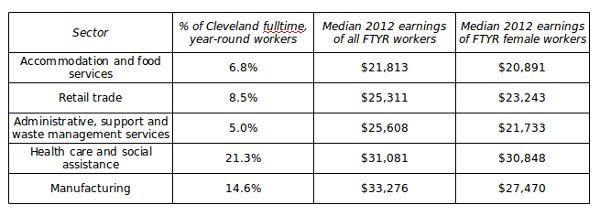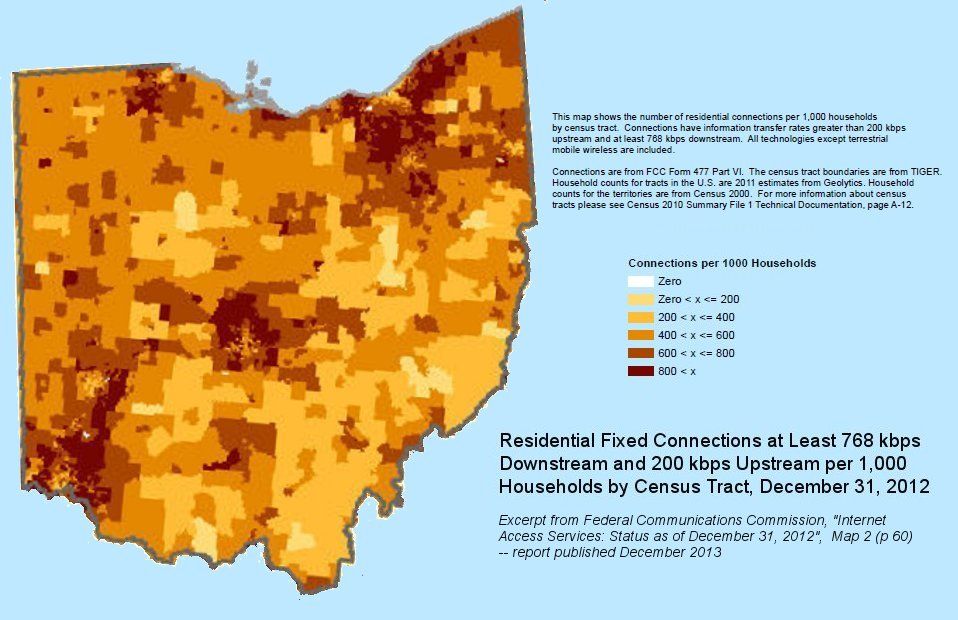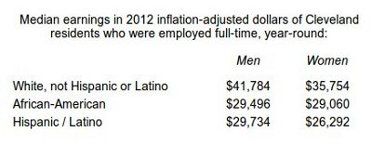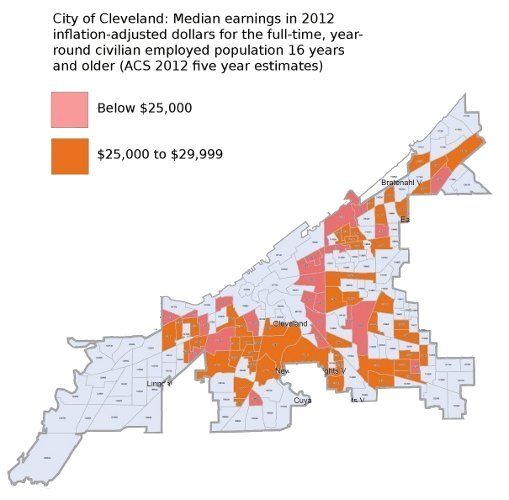Everyone needs a nice place to live in,
And good food to eat that's not too expensive,
And clean clothes with no holes or patches.
A doctor to call, an old friend to visit,
A way to get places, parties, and music.
A street to walk safely,
And benches to sit on with shade in the summer,
And warm friendly places to be in the winter,
Some work to do that's useful to others
and doesn't get boring.
People to come to for all kinds of answers,
And somebody checkin' so nobody's forgotten.
Money to spend that's given and taken
Without feeling guilty.
Love without pity,
Pride without anger,
Everyone knows what everyone needs,
But programs, laws, city councils, commissions,
Agencies, bureaus can't give it to us.
All of us need the best in each other,
And if we can find it,
And if we can give it,
The rest will soon follow.
If we all stick together,
We'll get what we need.
Amen.
(This was printed in the insert of Utah Phillips' 1979 album All Used Up. I googled for it yesterday, for a Christmas tweet, and was shocked not to find it in wide circulation... only on this Facebook site. So I'm posting it.
(Mr. Phillips was born in Cleveland in 1935 to two union organizers.)
12.25.2014
6.02.2014
Ohio coal: How many jobs?
As angry bipartisan crowds of Ohio politicians gather to defend "our coal jobs" from the US EPA's proposed new rules for coal power plants, it's worth noting just how many jobs we're talking about.
Here's how many, courtesy of the Ohio Department of Jobs and Family Services Labor Market Information site:
Yes, those are the actual numbers -- no zeros have been omitted.
(It's off topic, but note the increase in Ohio coal employment during the "Obama war on coal" years.)
Another 4,000-5,000 Ohioans work at fossil-fueled power plants, mostly operated by the utilities. Can't tell from the LMI figures how many of those jobs are at coal-fired plants, but the state has almost as many utility generating sites fueled by natural gas as by coal these days.
So estimating generously, Ohio might have as many as 7,000 actual "coal jobs".
(For perspective: Total jobs in the state -- about 5.4 million. Total unemployed in the state as of April -- 328,000. At least 46 individual companies -- retailers, banks, health systems, manufacturers, universities -- had more than 7,000 Ohioans on their payrolls in 2013.)
Here's how many, courtesy of the Ohio Department of Jobs and Family Services Labor Market Information site:
Yes, those are the actual numbers -- no zeros have been omitted.
(It's off topic, but note the increase in Ohio coal employment during the "Obama war on coal" years.)
Another 4,000-5,000 Ohioans work at fossil-fueled power plants, mostly operated by the utilities. Can't tell from the LMI figures how many of those jobs are at coal-fired plants, but the state has almost as many utility generating sites fueled by natural gas as by coal these days.
So estimating generously, Ohio might have as many as 7,000 actual "coal jobs".
(For perspective: Total jobs in the state -- about 5.4 million. Total unemployed in the state as of April -- 328,000. At least 46 individual companies -- retailers, banks, health systems, manufacturers, universities -- had more than 7,000 Ohioans on their payrolls in 2013.)
4.06.2014
Ohio House committee testimony on HB 483
On Wednesday I went to Columbus and testified about House Bill 483 before the Ohio House Finance and Appropriations Committee.
Here's my prepared testimony.
Olivera Perkins quoted some of it in her Tuesday PD article about the bill.
Update 4/7: News this morning -- the Committee is removing the language that would require online filing of unemployment claims from the version of HB 483 they'll be reporting out. Progress!
(Of course there's plenty of opportunity for the House, or the Senate, to put some version of it back in before HB 483's final passage.)
Here's my prepared testimony.
Olivera Perkins quoted some of it in her Tuesday PD article about the bill.
Update 4/7: News this morning -- the Committee is removing the language that would require online filing of unemployment claims from the version of HB 483 they'll be reporting out. Progress!
(Of course there's plenty of opportunity for the House, or the Senate, to put some version of it back in before HB 483's final passage.)
3.20.2014
HB 483: Unemployment compensation only for the connected?
Hidden deep in Ohio House Bill 483, one of the eleven bills spawned by Governor Kasich's "Mid-Biennium Review", is a one-sentence change in the Unemployment Compensation process that will create yet another obstacle for any newly unemployed Ohioan who's among the state's two and a half million adults still lacking home broadband access or the skills to use it.
Here's the sentence (in RC 4141.28 -- my emphasis):
Think this isn't such a big deal outside of a few digitally challenged neighborhoods in Cleveland, Columbus, Akron, Toledo, Youngstown, Dayton and Concinnati? Think again:
Yes, you got that right. At the end of 2012, according to the FCC's most recent information, most of the state had home broadband connections in fewer than 60% of households. The percentage in most of southeast and central Appalachian Ohio was less than 40%.
(Check out Connect Ohio's 2012 Residential Technology Assessment to learn more.)
The State of Ohio, like many public and private institutions, is understandably impatient to migrate as much of its public business to the Internet as possible, and eliminate the expense of its legacy systems (like offices and phone centers) as soon as possible. And for many of the state's "customers" this migration can't happen fast enough. Who wants to return to standing on the unemployment line?
But that understandable impatience seems to be leading the Ohio Department of Jobs and Family Services, like many Internet-eager institutions, to ignore a fundamental rule of IT systems management: Never deploy a mission-critical software or hardware system without training and equipping all the people who will have to use it.
In the case of shifting critical ODJFS social and income support functions to Internet-only form, this means coming to grips with the uncomfortable fact that many thousands of the agency's current and future clients just don't have the basic skills, equipment or fast Net access to follow them there. "Coming to grips" meaning: Either start taking some serious steps to help those clients acquire the necessary skills, equipment and access (= spend money!), or keep providing human/phone alternatives (also = spend money!)
Of course ODJFS could just throw all those digitally unprepared unemployed Ohioans out of the boat and let them somehow learn to swim on their own, or sink.
But that inevitably means letting thousands fail to receive the unemployment insurance benefits to which they're legally entitled. And no one in the Kasich Administration or the General Assembly would want that to happen.
Would they?
Here's the sentence (in RC 4141.28 -- my emphasis):
Effective July 1, 2015, an individual shall file an application for determination of benefit rights and a claim for benefits by electronic means in a manner prescribed by the director, except that no individual shall be required to file such an application or claim by electronic means if one or more of the following circumstances apply:So if you think you might get laid off after mid-2015, make sure you have a computer and a DSL line or cable modem before the axe falls. And you might want to pay that Internet bill a few months ahead, while you still have a little discretionary income... because your $300-to-400-a week unemployment check will have to cover food, rent, heat, electricity and the cellphone you use to look for work.
(1) The individual is legally prohibited from using a computer;
(2) The individual has a physical or visual impairment that makes the individual unable to use a computer;
(3) The individual has limited ability to read or write effectively in a language in which the electronic application or claim is available;
(4) A disaster or emergency declared by the governor prevents compliance with the electronic filing requirement.
Think this isn't such a big deal outside of a few digitally challenged neighborhoods in Cleveland, Columbus, Akron, Toledo, Youngstown, Dayton and Concinnati? Think again:
Yes, you got that right. At the end of 2012, according to the FCC's most recent information, most of the state had home broadband connections in fewer than 60% of households. The percentage in most of southeast and central Appalachian Ohio was less than 40%.
(Check out Connect Ohio's 2012 Residential Technology Assessment to learn more.)
The State of Ohio, like many public and private institutions, is understandably impatient to migrate as much of its public business to the Internet as possible, and eliminate the expense of its legacy systems (like offices and phone centers) as soon as possible. And for many of the state's "customers" this migration can't happen fast enough. Who wants to return to standing on the unemployment line?
But that understandable impatience seems to be leading the Ohio Department of Jobs and Family Services, like many Internet-eager institutions, to ignore a fundamental rule of IT systems management: Never deploy a mission-critical software or hardware system without training and equipping all the people who will have to use it.
In the case of shifting critical ODJFS social and income support functions to Internet-only form, this means coming to grips with the uncomfortable fact that many thousands of the agency's current and future clients just don't have the basic skills, equipment or fast Net access to follow them there. "Coming to grips" meaning: Either start taking some serious steps to help those clients acquire the necessary skills, equipment and access (= spend money!), or keep providing human/phone alternatives (also = spend money!)
Of course ODJFS could just throw all those digitally unprepared unemployed Ohioans out of the boat and let them somehow learn to swim on their own, or sink.
But that inevitably means letting thousands fail to receive the unemployment insurance benefits to which they're legally entitled. And no one in the Kasich Administration or the General Assembly would want that to happen.
Would they?
3.07.2014
What the digital divide looks like in Cleveland
Thanks to this Atlantic Cities article, I recently learned that the FCC now publishes Census tract-level data on the ratio of "residential fixed broadband connections" (cable modem and DSL accounts) to households. The December 2012 data were posted on the FCC site in December 2013.
So here's what the digital divide looks like in Cuyahoga County.
And here's the city of Cleveland:
Looks a lot like this, doesn't it?
(See the CYC Project's Cuyahoga County Internet Survey for more information about who's connected and who's not.)
So here's what the digital divide looks like in Cuyahoga County.
And here's the city of Cleveland:
Looks a lot like this, doesn't it?
(See the CYC Project's Cuyahoga County Internet Survey for more information about who's connected and who's not.)
1.20.2014
On MLK Day: Which Clevelanders' jobs are worth least?
No surprises, but it's Martin Luther King Day so let's put it out there. From the same source as the last few posts, the U.S. Census' most recent American Community Survey (2010-2012 Three Year Estimate):
Note well: The median pay of a fully employed African-American or Hispanic Cleveland resident qualifies him or her -- if he or she is the only earner in a family of four or more -- for Federal food assistance and Medicaid.
It's easy to forget (especially when we're so seldom reminded) that King's last days were spent in Memphis supporting a strike by low-income African-American sanitation workers demanding union recognition:
Note well: The median pay of a fully employed African-American or Hispanic Cleveland resident qualifies him or her -- if he or she is the only earner in a family of four or more -- for Federal food assistance and Medicaid.
It's easy to forget (especially when we're so seldom reminded) that King's last days were spent in Memphis supporting a strike by low-income African-American sanitation workers demanding union recognition:
... [T]he sanitation men had been asking the city for recognition of their union and for a resolution of their many grievances since 1963. These workers lived below the poverty level while working fulltime jobs, and 40 percent of them qualified for welfare to supplement their meager salaries. [My emphasis]Not unlike some of our neighbors in 2014.
1.15.2014
Success stories
So, here's the point of the previous three posts:
The Clevelanders whose minimal average paychecks are discussed in these posts are not "the poor", as this term is generally used. They aren't unemployed, or stuck in part-time or seasonal work. They aren't "on welfare". They're not living on disability checks. For the most part, they're not homeless.
Cleveland has plenty of residents in each of these situations (except for "on welfare", which doesn't really exist any more). But that's not who we're talking about here.
No, we're talking here about the city's success stories. We're talking about the people who got the job -- those who went to work and collected a paycheck for at least 35 hours, for at least 50 weeks out of 52.
According to the Census, only about half of the city's adults who are "in the labor force" during any given year manage to be "full-time, year-round employed". In 2012, according to the Census, about 94,000 Clevelanders achieved this elite status.
And half of them earned less than $32,000 (pre-tax) for that year of work.
The Clevelanders whose minimal average paychecks are discussed in these posts are not "the poor", as this term is generally used. They aren't unemployed, or stuck in part-time or seasonal work. They aren't "on welfare". They're not living on disability checks. For the most part, they're not homeless.
Cleveland has plenty of residents in each of these situations (except for "on welfare", which doesn't really exist any more). But that's not who we're talking about here.
No, we're talking here about the city's success stories. We're talking about the people who got the job -- those who went to work and collected a paycheck for at least 35 hours, for at least 50 weeks out of 52.
According to the Census, only about half of the city's adults who are "in the labor force" during any given year manage to be "full-time, year-round employed". In 2012, according to the Census, about 94,000 Clevelanders achieved this elite status.
And half of them earned less than $32,000 (pre-tax) for that year of work.
1.13.2014
"The best anti-poverty program is a job..."
... sometimes. Sometimes, not so much.
From the same American Community Survey data cited in the last post, here are the median 2012 earnings of Clevelanders who worked full-time, year-round in five sectors that, taken together, accounted for about 55% of our city's 94,000 fully-employed residents:

The 2012 Federal “poverty level” for a three-person household was $19,090, and for a four-person household was $23,050.
The eligibility ceiling for SNAP (food assistance) benefits was 130% of these poverty guidelines: $24,817 for a family of three, $29,965 for a family of four.
The ceiling for Medicaid was 133% of the poverty guidelines: $25,390 for a family of three, $30,657 for a family of four.
Compare these "poverty program" thresholds to the median pay levels for full-time workers listed above -- remembering that "median" means half earned less.
The bottom line: A single parent with two or three kids and a full-time job, living in Cleveland, has a pretty good chance of qualifying for Federal food assistance and Medicaid... especially if her job is in food services, retail or “administrative, support and waste management”.
From the same American Community Survey data cited in the last post, here are the median 2012 earnings of Clevelanders who worked full-time, year-round in five sectors that, taken together, accounted for about 55% of our city's 94,000 fully-employed residents:

The 2012 Federal “poverty level” for a three-person household was $19,090, and for a four-person household was $23,050.
The eligibility ceiling for SNAP (food assistance) benefits was 130% of these poverty guidelines: $24,817 for a family of three, $29,965 for a family of four.
The ceiling for Medicaid was 133% of the poverty guidelines: $25,390 for a family of three, $30,657 for a family of four.
Compare these "poverty program" thresholds to the median pay levels for full-time workers listed above -- remembering that "median" means half earned less.
The bottom line: A single parent with two or three kids and a full-time job, living in Cleveland, has a pretty good chance of qualifying for Federal food assistance and Medicaid... especially if her job is in food services, retail or “administrative, support and waste management”.
What a job is worth in Cleveland
According to the U.S. Census' most recent American Community Survey:
The median annual pay earned by the 94,000 (or so) Cleveland residents who worked full-time, year-round in 2012 was $32,716.
Divided by 2,080 hours of work, that's $15.73 an hour.
"Median" means that half of the city's 94,000 (or so) fully employed workers earned less. (For comparison, the 2012 median for the whole state of Ohio was $41,759.)
Adjusted for inflation, Cleveland's 2012 full-time year-round earnings median was down 12% from the level found by the Census in 1999 – about $2.16 an hour less.
51% of Cleveland's full-time year-round workers are women. Their median pay earned in 2012 was $30,959. Divided by 2,080 hours of work, that's $14.88 an hour. (Again, this means half of those fulltime female workers made less.)
Source: 2010-2012 American Community Survey 3-Year Estimates, S2404: Industry by sex and median earnings in the past 12 months (in 2012 inflation-adjusted dollars) for the full-time, year-round civilian employed population 16 years and over
The median annual pay earned by the 94,000 (or so) Cleveland residents who worked full-time, year-round in 2012 was $32,716.
Divided by 2,080 hours of work, that's $15.73 an hour.
"Median" means that half of the city's 94,000 (or so) fully employed workers earned less. (For comparison, the 2012 median for the whole state of Ohio was $41,759.)
Adjusted for inflation, Cleveland's 2012 full-time year-round earnings median was down 12% from the level found by the Census in 1999 – about $2.16 an hour less.
51% of Cleveland's full-time year-round workers are women. Their median pay earned in 2012 was $30,959. Divided by 2,080 hours of work, that's $14.88 an hour. (Again, this means half of those fulltime female workers made less.)
Source: 2010-2012 American Community Survey 3-Year Estimates, S2404: Industry by sex and median earnings in the past 12 months (in 2012 inflation-adjusted dollars) for the full-time, year-round civilian employed population 16 years and over
Still lazy after all these years
So I'm, um, starting to write here again.
This weblog was started way back in 2003. In July 2006, I switched to a WordPress site (CallahansClevelandDiary.com), which lasted until early 2013, when, for reasons too complicated and boring to explain here, I lost access to the hosting site along with all the files.
But the truth is, Callahan's Cleveland Diary really ran out of steam a year before that. Part of the reason was time; I was lucky enough to get to run a big community technology project funded by Federal broadband stimulus funds (which is my real work) and I just didn't have the bandwidth for blogging. Part of the reason was boredom: I'd spent years writing about the same handful of topics for a shrinking audience (it was never very big in the first place), and it was all getting pretty repetitious.
Well, now the big project is over, a couple of years have passed, and that old itch seems to have returned. So here I am back at the old stand, with some new (or maybe just reconditioned) thoughts to share about "economics, politics and real life in Cleveland".
As for that six years of lost blogging at CallahansClevelandDiary.com, I've managed to salvage a lot of those posts via the still-awesome Internet Archive, and I'm slowly but steadily re-posting them to a new "sibling blog" of this one called Cleveland Diary: The Lost Years.
So, there you have it. Cleveland Diary is back. Thanks for stopping by.
This weblog was started way back in 2003. In July 2006, I switched to a WordPress site (CallahansClevelandDiary.com), which lasted until early 2013, when, for reasons too complicated and boring to explain here, I lost access to the hosting site along with all the files.
But the truth is, Callahan's Cleveland Diary really ran out of steam a year before that. Part of the reason was time; I was lucky enough to get to run a big community technology project funded by Federal broadband stimulus funds (which is my real work) and I just didn't have the bandwidth for blogging. Part of the reason was boredom: I'd spent years writing about the same handful of topics for a shrinking audience (it was never very big in the first place), and it was all getting pretty repetitious.
Well, now the big project is over, a couple of years have passed, and that old itch seems to have returned. So here I am back at the old stand, with some new (or maybe just reconditioned) thoughts to share about "economics, politics and real life in Cleveland".
As for that six years of lost blogging at CallahansClevelandDiary.com, I've managed to salvage a lot of those posts via the still-awesome Internet Archive, and I'm slowly but steadily re-posting them to a new "sibling blog" of this one called Cleveland Diary: The Lost Years.
So, there you have it. Cleveland Diary is back. Thanks for stopping by.
Subscribe to:
Comments (Atom)





